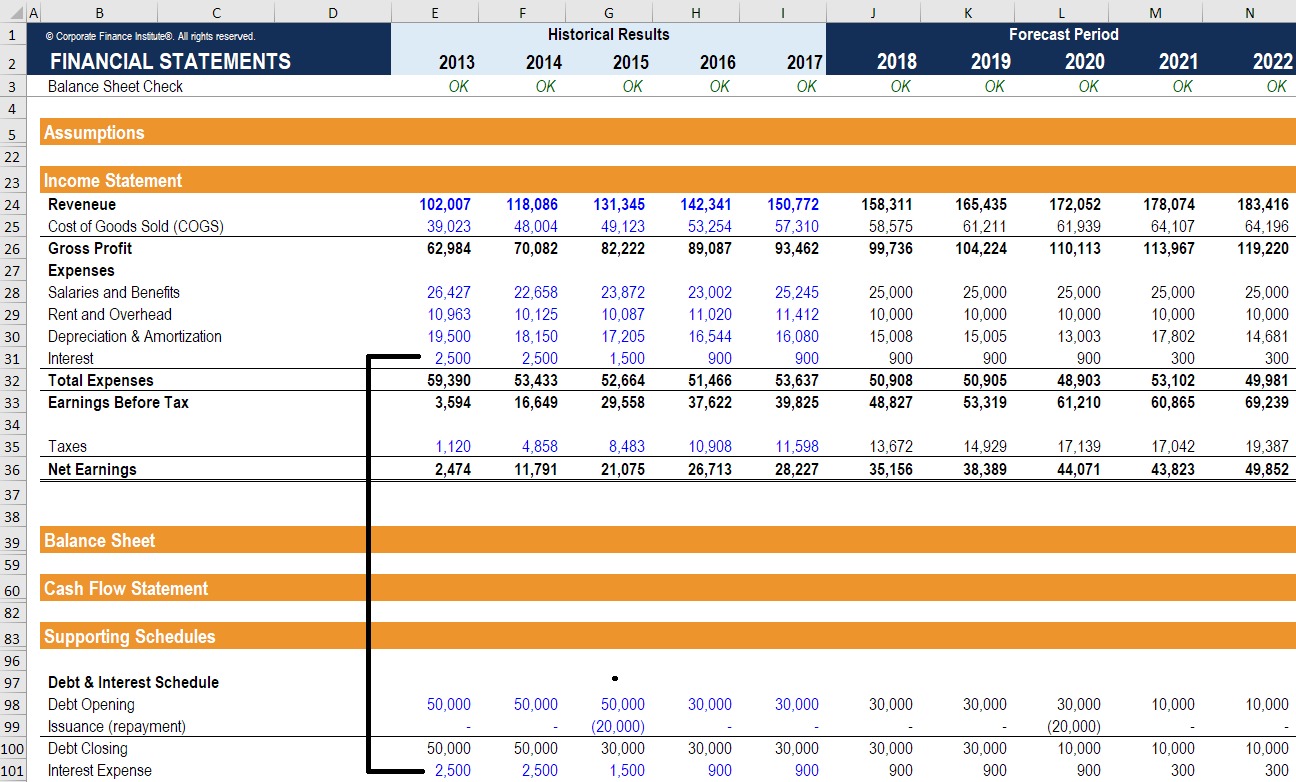Home>Finance>How To Calculate Credit For Taxes Paid To Another State


Finance
How To Calculate Credit For Taxes Paid To Another State
Published: January 8, 2024
Learn how to calculate credit for taxes paid to another state in Finance and maximize your tax benefits
(Many of the links in this article redirect to a specific reviewed product. Your purchase of these products through affiliate links helps to generate commission for LiveWell, at no extra cost. Learn more)
Table of Contents
Introduction
When it comes to filing taxes, it’s essential to ensure that you’re not paying more than you owe. If you earn income in multiple states, you may find yourself in a situation where you have to pay taxes to more than one state. In such cases, you may be eligible for a credit for taxes paid to another state.
The credit for taxes paid to another state is a provision in the tax law that allows taxpayers to avoid double taxation on the same income. Essentially, if you pay taxes to one state on income earned in that state, you may be able to claim a credit against your tax liability in another state where you also earn income.
This credit is designed to prevent taxpayers from being penalized for earning income in multiple jurisdictions. It ensures that you are not taxed twice on the same income, providing relief and avoiding an unfair burden of paying taxes on the same earnings.
In this article, we will dive into the details of how to calculate the credit for taxes paid to another state. We will outline the steps you need to follow to determine your eligibility and claim this credit, and provide you with an example calculation to make the process clearer.
Understanding how to calculate and claim this credit can potentially save you a significant amount of money, lower your overall tax liability, and result in a smoother tax-filing experience. So, let’s explore the intricacies of credit for taxes paid to another state and empower you to make the most of this opportunity.
Understanding Credit for Taxes Paid to Another State
The credit for taxes paid to another state is a mechanism that allows you to offset the tax liability you owe to one state with the taxes you’ve already paid to another state on the same income. In other words, if you’ve paid taxes to one state on income earned in that state, you may be able to reduce your tax liability in another state where you also earn income.
This credit helps alleviate the burden of double taxation by ensuring that you are not taxed twice on the same income. It acknowledges that you have already fulfilled your tax obligation in one state and prevents you from being penalized for earning income in multiple jurisdictions.
In order to qualify for the credit for taxes paid to another state, you must meet certain criteria:
- Residency Requirements: You must be a resident of the state where you are claiming the credit, as well as a taxpayer in the state where you paid taxes.
- Income Source: The income you earned must be taxable in both states.
- Tax Paid: You must have actually paid the taxes to the other state. It is important to keep accurate records of your tax payments to support your claim.
- Limits and Restrictions: Each state has its own rules and limitations on the credit for taxes paid to another state. It is recommended to consult the specific guidelines of the states involved.
It’s important to note that the credit for taxes paid to another state may not fully eliminate your tax liability in the second state. Instead, it aims to provide relief by reducing the amount of tax you owe. The exact calculation and amount of the credit will depend on the tax laws of the states involved, your income, and other individual factors.
To claim this credit, you will typically need to fill out and attach a Schedule P or an equivalent form to your state tax return. This form will allow you to calculate the credit amount based on the taxes you’ve paid to the other state.
Understanding the intricacies of the credit for taxes paid to another state is essential to ensure compliance with tax laws and maximize your potential tax savings. Now that you have a solid foundation, let’s move on to the steps involved in calculating this credit.
Steps to Calculate Credit for Taxes Paid to Another State
Calculating the credit for taxes paid to another state involves several steps. By following these steps, you can determine the amount of credit you are eligible to claim against your tax liability. Here’s a breakdown of the process:
- Review State Requirements: Start by researching and understanding the specific requirements and guidelines of both states involved. Each state may have different rules and limitations on the credit. Look for information on residency requirements, income types eligible for the credit, and any specific forms or documentation needed.
- Calculate Tax Liability: Determine your tax liability in the state where you earned income by following the tax laws and procedures of that state. This will involve calculating your taxable income, applying the applicable tax rate, and factoring in any deductions or credits available in that state.
- Gather Tax Documents: Collect all the necessary tax documents, including W-2 forms, 1099 forms, and any documentation related to your income and taxes paid in both states. These documents will serve as evidence of your income and tax payments.
- Calculate Credit: Use the information from your tax documents to calculate the credit for taxes paid to another state. Typically, this involves completing a Schedule P or an equivalent form. Follow the instructions provided with the form to accurately calculate the credit amount.
- Apply the Credit: Once you have calculated the credit amount, apply it to reduce your tax liability in the state where you earned income. Subtract the credit from your tax liability to determine the final amount you owe in that state.
- Document and File: Make sure to keep copies of all your tax forms, documentation, and calculations for your records. Attach the appropriate forms, such as Schedule P, to your state tax return when filing.
It’s important to note that the calculations and process involved may vary depending on the specific rules and regulations of the states you’re dealing with. It is recommended to consult the tax authorities or seek professional advice to ensure accuracy and compliance with the applicable tax laws.
Now that we have covered the steps involved in calculating the credit for taxes paid to another state, let’s delve into an example to further illustrate the process.
Example Calculation
To provide a clearer understanding of how the credit for taxes paid to another state works, let’s walk through an example calculation:
Imagine you are a resident of State A and also earn income in State B. In State A, your tax liability amounts to $10,000, while in State B, you pay $5,000 in taxes on income earned in that state. You want to determine the credit you can claim for the taxes paid to State B on your State A tax return.
First, review the requirements and guidelines for claiming the credit in both states. Ensure that you meet the residency requirements and that the income you earned is taxable in both states.
Next, calculate your tax liability in State A without considering the credit. If the tax liability is indeed $10,000, you will then move on to calculating the credit amount.
Using the appropriate form, such as Schedule P, you will calculate the credit for taxes paid to State B. In this case, since you paid $5,000 in taxes to State B, you will be able to claim that amount as a credit on your State A tax return.
Once you have calculated the credit amount, subtract it from your tax liability in State A. In this example, if your tax liability was $10,000 and you claimed a $5,000 credit, your final tax liability in State A would be reduced to $5,000.
It’s important to note that the calculation may involve additional considerations, such as any limitations or restrictions imposed by the states involved. Be sure to follow the instructions provided by each state and consult with tax professionals if necessary.
Remember to keep accurate records of your income, taxes paid, and supporting documentation for future reference and potential audits.
This example serves to illustrate the process of calculating the credit for taxes paid to another state. It is essential to adapt the calculation to your specific circumstances and consult the tax guidelines of the states involved for accurate calculations.
With this example in mind, you now have a clearer understanding of how the credit for taxes paid to another state can help minimize your tax liability.
Conclusion
Understanding and harnessing the credit for taxes paid to another state can significantly impact your tax liability when earning income across multiple jurisdictions. By following the steps outlined in this article, you can calculate and claim the credit, potentially saving you money and avoiding double taxation.
Remember to familiarize yourself with the specific guidelines and requirements of the states involved, such as residency criteria, eligible income types, and any limitations or restrictions on the credit. This will ensure that you accurately calculate and claim the credit for taxes paid to another state.
Keeping thorough records of your income, taxes paid, and supporting documents is crucial. This will allow you to accurately calculate your tax liability and provide evidence for your claim if audited by tax authorities in the future.
If you find the process overwhelming or have complex tax situations, consider seeking professional assistance. Tax specialists or certified public accountants can guide you through the process, ensuring compliance with tax laws and maximizing your potential tax savings.
Remember, the credit for taxes paid to another state is designed to prevent double taxation and provide relief for individuals earning income in multiple states. By correctly calculating and claiming this credit, you can minimize your tax liability and enjoy a smoother tax-filing experience.
As always, it is advisable to consult the official tax authorities or seek professional advice to ensure accuracy and compliance with the tax laws of the states involved.
Now that you have a clearer understanding of how to calculate the credit for taxes paid to another state, make sure to utilize this knowledge to your advantage when filing your taxes. Explore the tax laws of the states where you earn income, gather the necessary documentation, and follow the required steps to claim the credit.
Empower yourself with this valuable tool and take control of your tax liabilities across multiple jurisdictions. By doing so, you can optimize your finances and ensure that you’re not paying more in taxes than you owe.














